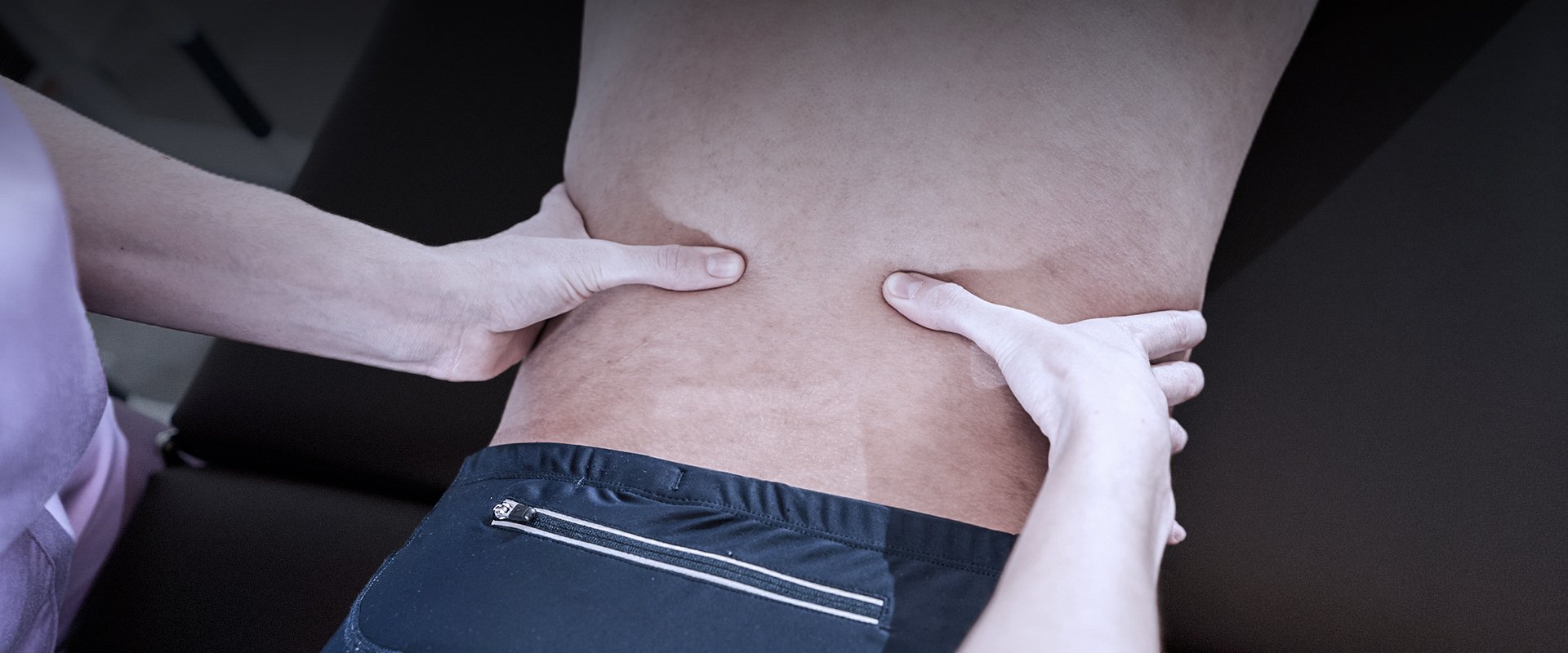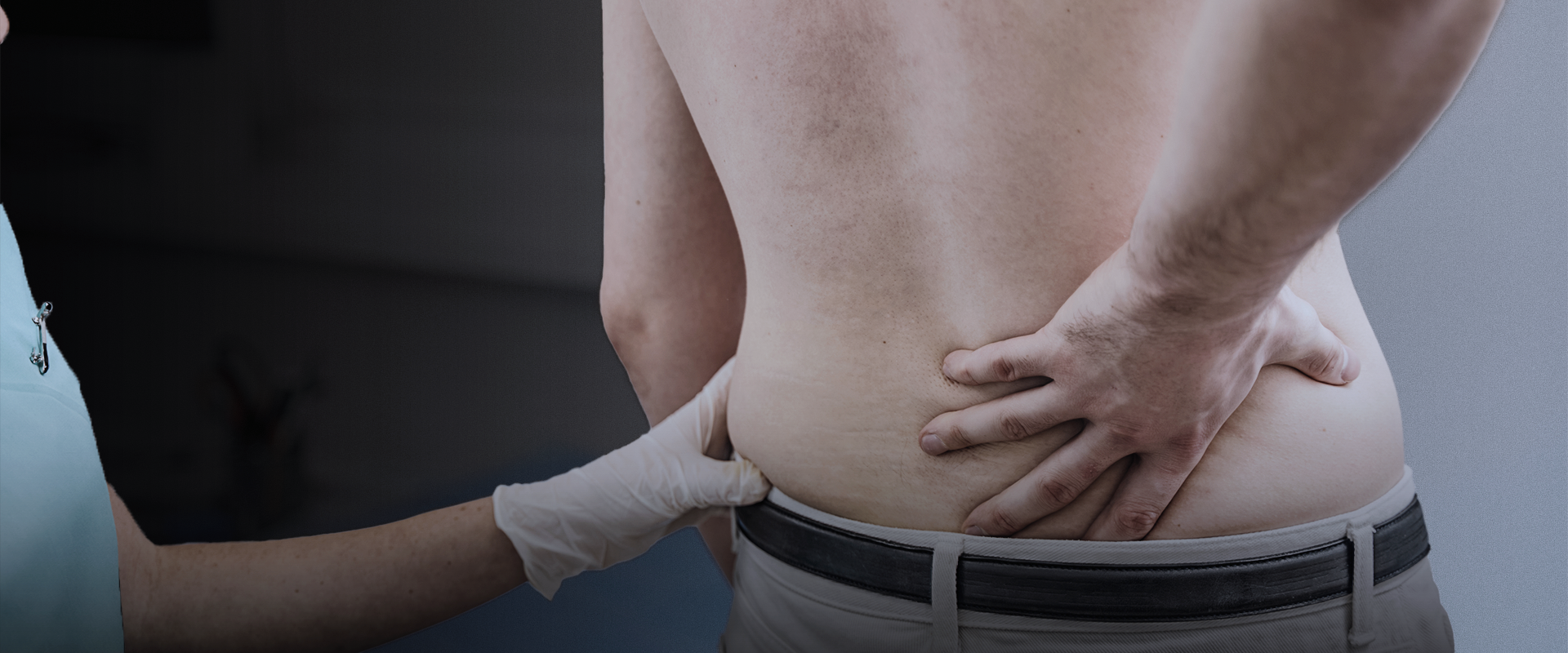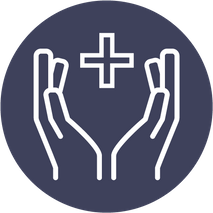
Physical therapy for Quadratus Lumborum
AT EVOLVE
Physical therapy for Quadratus Lumborum
HOW CAN PHYSICAL THERAPY TREAT PAIN OR INJURY IN THE QUADRATUS LUMBORUM MUSCLE?
The quadratus lumborum muscle is the deepest muscle in the lower back and plays an important role in movement and stabilization of the spine, pelvis and ribcage. The quadratus lumborum muscle can also be a significant cause of low back pain. Tightness, overactivity and active trigger points in the quadratus lumborum can lead to deep aching and sometimes radiating pain in the lower back and nearby areas. A physical therapist is a healthcare professional trained to evaluate and treat musculoskeletal conditions like quadratus lumborum syndrome to help relieve your pain.
WHAT DOES PHYSICAL THERAPY FOR THE QUADRATUS LUMBORUM MUSCLE LOOK LIKE?
Physical therapy for the quadratus lumborum muscle aims to treat symptoms such as lower back pain or radiating pain caused by this muscle. Our team of physical therapists will always begin by asking about your concerns, looking at your medical history and understanding your goals for treatment. Next, we will examine your lower back with special attention to the quadratus lumborum muscle. If your therapist determines this muscle is contributing to your symptoms, they will create an individualized program to address tightness, overactivity, active trigger points, pain and poor motor control. Your therapist may employ manual, hands-on techniques while also prescribing exercises to be performed in the clinic and at home.
HOW LONG WILL I NEED PHYSICAL THERAPY?
The duration of your physical therapy plan of care is based on several factors including the severity of symptoms and their underlying causes. While full resolution of symptoms can take some time, you may begin to see some results within a few weeks such as reduced pain and stiffness. Improvements in strength and flexibility and returning to your prior level of activity may take longer. Achieving long-lasting results may take some time, but dedication to your program will not only help you achieve these results but will help to decrease the likelihood of symptoms recurring in the future.
MEET YOUR QUADRATUS LUMBORUM
The quadratus lumborum or QL is a muscle that lies deep in your lower back. The QL attaches along the top of your pelvic bone (the iliac crest) and extends upward to attach to the lowest rib and along the transverse processes of lumbar vertebra one through four. This muscle is the deepest back muscle which means it lies below other muscles and fascial layers.
The QL is considered a core muscle and a postural muscle. It has several functions. Its attachments on the spine and pelvis suggest it may extend the spine and laterally tilt the pelvis though it is likely that the QL assists other muscles in these functions more than it performs them independently. Its attachment on the 12th rib helps stabilize the diaphragm to allow for better inspiration. It also helps maintain frontal plane stabilization of the pelvis.
QUADRATUS LUMBORUM SYNDROME
As you can see, the QL has its hand in many different functions of the spine, pelvis and ribcage. Because of its location in the lower back, problems with the QL muscle can lead to lower back or buttock pain. It is always prudent for your therapist to examine the QL muscle if you are experiencing low back pain. Pain or postural dysfunction caused by the QL muscle is known as quadratus lumborum syndrome. Signs and symptoms of QL syndrome include
- Low back pain that is deep and achy
- Pain that worsens in sitting or standing
- Pain when coming up to stand
- Pain with bending forward or leaning away from the involved QL muscle
- Pain with coughing or sneezing
- Tightness of the QL muscle
- Overactivity of the QL muscle
Active trigger points in the QL muscles which can refer symptoms to other locations:
- Outside of the hip
- Buttocks and posterior thigh (mimicking sciatic pain)
- Front of the upper thigh
- Groin
- Abdomen
- Sacroiliac joint region
WHAT CAUSES QL SYNDROME?
QL syndrome can have many causes. An acute or traumatic event like lifting something very heavy, falling or getting into a car accident can lead to the development of active trigger points and overactivity in the QL muscle. This can persist for quite some time if not addressed. Additionally, repetitive motions that stress the QL can also lead to QL syndrome. These activities could be walking or running on a slant or uneven surface, repetitive bending such as during gardening or at work or repetitive lifting. Additionally, anatomical variations such as a leg length discrepancy can lead to QL syndrome.
Call to Schedule a Consultation! 1-718-258-3300End Injury Progression
Physical therapy for Quadratus Lumborum has proven to prevent injury, slow and even stop pain issues, improve performance, and reverse injury progression in many cases.
Relieve Pain
The movements used in this technique can target your entire body helping you to manage discomfort and pain during the course of your physical therapy treatments.
Improve Range of Motion
Posture awareness is an important area to focus on due to the fact that certain positions may cause you further discomfort and pain.
Restore Mobility
You can regain mobility and flexibility by taking part in the stretches and exercises as prescribed by your physical therapist.
How Long Will Physical Therapy for Quadratus Lumborum Last?
If you decide to work with a physical therapist to help with your Quadratus Lumborum issues, your entire treatment plan could consist of around 8-20+ different physical therapy sessions that will each last 60-90 minutes. Once you complete your customized physical therapy treatment plan, you will be able to continue to do the prescribed stretches and exercises utilized during your back PT sessions yet in the comfort of your own home.
PHYSICAL THERAPY FOR THE QUADRATUS LUMBORUM
Physical therapists are movement specialists trained to evaluate and treat musculoskeletal conditions like QL syndrome. While my team of therapists and I will always create an individualized treatment plan just for you, below are some common treatment strategies and techniques to address QL syndrome:
Myofascial release techniques are often utilized to address dysfunction in the QL muscle as well as nearby muscles and fascia. The longer you have dealt with QL syndrome, the more likely it is that other muscles and fascia will need treatment as well
Trigger point release through dry needling or manual therapy may be prescribed to treat active trigger points. This can improve both localized pain as well as referred pain and reduce overactivity in the QL muscle
Spinal mobilization to improve the movement of spinal segments is often recommended due to the stiffness or hypomobility that can arise in response to tight and overactive QL muscles
Muscle stretching to lengthen over shortened muscles can help with improved postural control and pain reduction
Muscle strengthening and motor control exercises are important to adequately support the QL muscle, spine and rib cage during exercise and activities of daily living
QL syndrome can be a significant cause of low back pain but it is important to rule out other causes such as disc herniation or nerve compression. As part of a comprehensive examination our team of therapists will look for red flags that indicate referral to a physician is necessary as well as look for other potential causes of low back pain.
Living with low back pain can take a toll on your mental and physical health. Our team of therapists would love to help you feel better. If you are living with QL muscle pain or curious if your low back pain could be caused by QL syndrome, call Evolve Physical Therapy today to schedule your initial evaluation.
Mill Basin (located in Harbor Fitness)
6161 Strickland Ave
Brooklyn, NY 11234
Monday: 7am-8pm
Tuesday: 7am-8pm
Wednesday: 8am-5pm
Thursday: 7am-8pm
Friday: 8am-1pm
Park Slope (located in Harbor Fitness)
550 5th Ave.
Brooklyn, NY 11215
Monday: 9am-8pm
Tuesday: 8am-6pm
Wednesday: 9am-8pm
Thursday: 8am-6pm
Friday: 8am-3pm
Gravesend
372 Avenue U
Brooklyn, NY 11223
Monday-Thursday: 8am-8pm
Friday: 8am-3pm
Kings Highway
945 Kings Highway
Brooklyn, NY 11223
Monday-Wed.: 12pm-8pm
Ready to take the next step to a healthier you?
Contact Us Today!
PHYSICAL THERAPY FOR QUADRATUS LUMBORUM
Need Physical therapy for Quadratus Lumborum physical therapy?
Let our caring and compassionate physical therapists help you with relieving pain while getting you back on your feet comfortably.
Call now to schedule your first PT consultation free of charge.
Call: 1-718-690-3229







